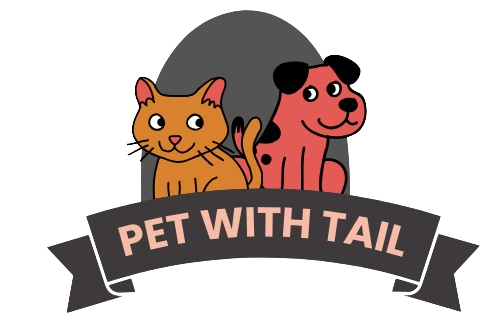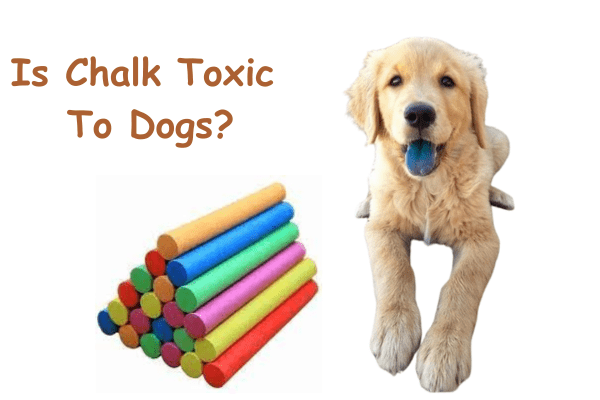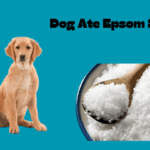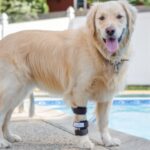Is chalk toxic to dogs? Have you ever wondered? If you have a dog that likes to chew on everything, you may have encountered this situation before. Your dog may have found a piece of chalk lying around may have snatched one from your kid’s hands, or may have even eaten some chalk from the sidewalk.
Should you take action if your dog eats chalk? How can you prevent your dog from eating chalk in the future? And what are the effects of chalk ingestion on your dog’s health and safety?
In this piece of knowledge, we will try to answer these questions and more. We will provide you with reliable information and practical advice on how to deal with chalk poisoning in dogs. We will also give you some tips on how to keep your dog away from chalk sources and types.
By the end of this blog post, you will have a better understanding of what happens when a dog eats chalk, and how to protect your furry friend from this potential risk.
Contents
- 1 What Happens When a Dog Eats Chalk?
- 2 How to Prevent Your Dog from Eating Chalk
- 3 Why Does My Dog Lick Chalk?
- 4 How to Treat Your Dog if They Have Eaten Chalk
- 5 Is sidewalk chalk toxic to dogs?
- 6 Is Crayola chalk toxic to dogs?
- 7 Is pool chalk toxic to dogs?
- 8 Conclusion
- 9 FAQs About Is Chalk Toxic To Dogs?
What Happens When a Dog Eats Chalk?
Chalk is a common substance that can be found in many places, such as schools, homes, playgrounds, or sidewalks. Chalk is usually made of calcium carbonate, which is a natural mineral that is not toxic to dogs in small amounts. However, chalk can also contain other ingredients, such as binders, pigments, or additives, that may be harmful to dogs if ingested.
Is chalk toxic to dogs? moreover, chalk can pose a physical risk to dogs, as it can cause gastrointestinal upset, blockage, or poisoning depending on the amount, type, and quality of the chalk, and the size, age, and health of the dog.
According to Dr. Jennifer Coates, a veterinary advisor for PetMD, gastrointestinal upset is the most common effect of chalk ingestion on dogs. This means that your dog may experience symptoms such as vomiting, diarrhea, loss of appetite, or abdominal pain after eating chalk. These symptoms are usually mild and self-limiting, and your dog may recover within a few hours or days with proper care and hydration.
However, if your dog shows signs of dehydration, blood in the vomit or stool, or severe pain, you should seek veterinary According to Dr. Jennifer Coates, a veterinary advisor for PetMD, gastrointestinal upset is the most common effect of chalk ingestion on dogs. tion immediately.
Another possible effect of chalk ingestion on dogs is blockage. This means that the chalk may get stuck in your dog’s mouth, throat, stomach, or intestines, and prevent the normal passage of food and water. This can cause serious complications, such as choking, breathing difficulties, perforation, infection, or death.
Blockage is more likely to occur if your dog has eaten a large amount of chalk, or if the chalk is hard, sharp, or irregular in shape. Some signs and symptoms of blockage in dogs are drooling, gagging, retching, difficulty swallowing, constipation, or lethargy. If you suspect that your dog has a blockage, you should contact your veterinarian or a poison control center right away.
The third possible effect of chalk ingestion on dogs is poisoning. This means that the chalk may contain toxic substances that can affect your dog’s nervous system, liver, kidneys, or blood. Poisoning is more likely to occur if the chalk is low-quality, expired, or contaminated with chemicals, metals, or mold.
Is chalk poisoning to dogs? some signs and symptoms of poisoning in dogs are tremors, seizures, weakness, confusion, jaundice, or pale gums. If you notice any of these signs, you should seek emergency care for your dog as soon as possible.
As you can see, chalk ingestion can have various effects on your dog’s health and safety, depending on several factors. Therefore, it is important to know what to do if your dog eats chalk, and how to prevent your dog from eating chalk in the first place.
How to Prevent Your Dog from Eating Chalk
The best way to protect your dog from the potential risks of chalk ingestion is to prevent your dog from eating chalk in the first place. This may not be easy, especially if you have a curious or playful dog that likes to chew on things, but it is possible with some tips and advice. Here are some ways to keep your dog away from chalk sources and types:
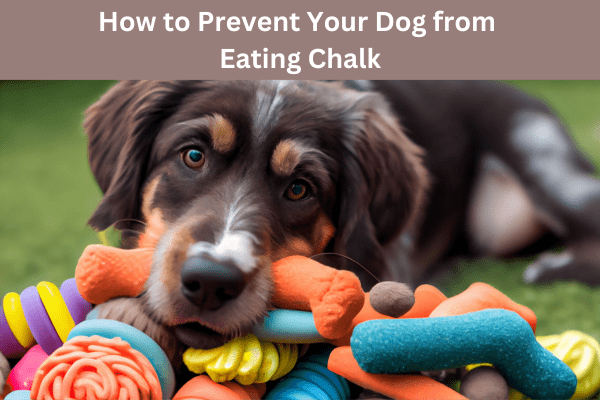
- Store chalk in a secure place that your dog cannot access. Though it might seem apparent, this is frequently disregarded. If you have chalk at home, for yourself or your kids, make sure to keep it in a closed cabinet, drawer, or container that your dog cannot open or reach. Do not leave chalk lying around on the floor, table, or couch, where your dog may find it, and mistake it for a toy or a treat.
- Supervise your dog when they are playing with chalk or near chalk sources. If you or your kids want to use chalk for art or fun, make sure to watch your dog closely and not let them get near the chalk. If your dog shows interest in the chalk, distract them with a different activity or toy. If your dog manages to grab a piece of chalk, take it away from them gently and firmly, and praise them for dropping it or leaving it. You can also use a spray bottle or a loud noise to deter your dog from approaching the chalk.
- Provide your dog with safe and appropriate chew toys. Can dogs eat chalk? What are the reasons? One of the reasons why dogs may eat chalk is because they are bored, stressed, or teething, and they need something to chew on. To satisfy your dog’s natural chewing instinct, you should give them some chew toys that are designed for dogs, such as rubber, nylon, or rope toys. These toys are durable, non-toxic, and can help clean your dog’s teeth and gums. You should also rotate the toys regularly to keep your dog interested and engaged.
- Teach your dog to leave things alone when given instructions. Another reason why dogs may eat chalk is because they are curious, playful, or greedy, and they want to explore or taste new things. To prevent your dog from eating chalk or other harmful items, you should teach them some basic commands, such as “drop it” or “leave it”. These commands can help you communicate with your dog and tell them to let go of something or to stay away from something. You can use treats, praise, or toys to reward your dog for obeying your commands and to reinforce positive behavior.
These tips and advice can help you prevent your dog from eating chalk and keep them safe and healthy. However, sometimes accidents may happen, and your dog may eat chalk despite your best efforts. In that case, you should know how to treat your dog if they have eaten chalk and what to do next.
Suggested: Can Dogs Have Cream Cheese Icing?
Does Chicken and Rice Cause Constipation In Dogs?
Why Does My Dog Lick Chalk?
Dogs lick for various reasons, such as to show affection, to seek attention, to explore their environment, or to relieve boredom or anxiety. Licking can also be a sign of pain, hunger, or nutritional deficiency in dogs. But why does your dog lick chalk specifically?
There are a few possible explanations for why your dog licks chalk. One is that your dog likes the taste or texture of the chalk. Chalk may have a salty or chalky flavor that appeals to your dog, or it may have a smooth or rough texture that stimulates your dog’s tongue.
Another is that your dog is trying to soothe themselves by licking chalk. Chalk can release endorphins in dogs, which are hormones that make them feel good. Licking chalk can also help your dog cope with stress, anxiety, or boredom.
How to Treat Your Dog if They Have Eaten Chalk
Even if you take preventive measures, accidents may happen, and your dog may eat chalk despite your best efforts. Chalk is bad for a dog, In that case, you should know how to treat your dog if they have eaten chalk and what steps to follow. Here are some general guidelines to help you handle this situation:
- Assess the situation and determine the urgency. The first thing you should do is to check how much and what type of chalk your dog has eaten, and how long ago it happened. You should also observe your dog for any signs and symptoms of chalk indigestion, such as vomiting, diarrhea, drooling, gagging, or lethargy. Depending on these factors, you may need to act quickly or wait and see.
- For advice, get in touch with a poison control center or your veterinarian. The next thing you should do is to call your veterinarian or a poison control center, such as the ASPCA Animal Poison Control Center or the Pet Poison Helpline, for advice. You should provide them with the details of the situation, such as the amount, type, and quality of the chalk, and the size, age, and health of your dog. They will tell you what to do next, such as inducing vomiting, giving activated charcoal, or seeking emergency care.
- Follow their instructions and monitor your dog’s condition. The third thing you should do is follow the instructions given by your veterinarian or the poison control center and monitor your dog’s condition closely. You should keep your dog hydrated and comfortable, and watch for any changes in their behavior or appearance. You should also keep the chalk package or label handy, in case you need to refer to it later.
- Seek emergency care if needed. The last thing you should do is to seek emergency care for your dog if needed. If your dog shows signs of severe distress, such as choking, breathing difficulties, tremors, seizures, weakness, confusion, jaundice, or pale gums, you should take them to the nearest animal hospital or clinic as soon as possible. You should also bring the chalk package or label with you, so the veterinarian can identify the ingredients and provide the appropriate treatment.
Is sidewalk chalk toxic to dogs?
Sidewalk chalk is a common item that children use to draw on the pavement or concrete. But what if your dog gets hold of it and decides to take a bite? Is sidewalk chalk toxic to dogs?
The good news is that most types of sidewalk chalk are not toxic to dogs. They are made with safe ingredients for human and animal contact, such as calcium carbonate and gypsum.
However, some sidewalk chalk may contain lead or other harmful additives, which can be toxic to dogs. Therefore, it is best to keep sidewalk chalk away from your dog and check the label before buying or using any sidewalk chalk.
Even if the sidewalk chalk is not toxic, it can still cause some problems for your dog if they eat too much of it. Sidewalk chalk can irritate your dog’s stomach and cause indigestion, nausea, or vomiting.
For some reason, Sidewalk chalk is toxic to dogs because it can also affect your dog’s respiratory system, especially if they inhale the dust. Sidewalk chalk dust can cause sneezing, coughing, or wheezing in your dog. In rare cases, sidewalk chalk can cause allergic reactions or infections in your dog.
Sidewalk chalk can also stain your dog’s fur or skin, which may require washing or grooming. Therefore, it is better to avoid letting your dog eat or play with sidewalk chalk.
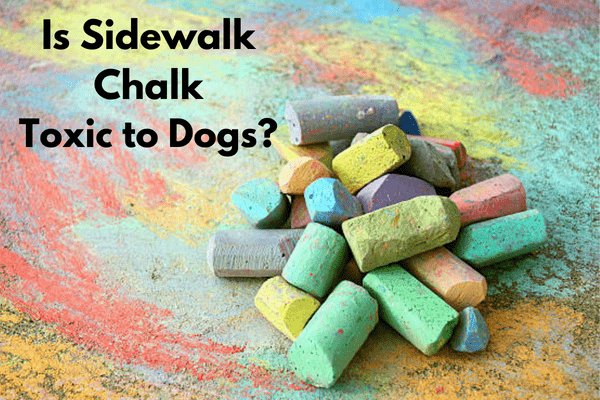
Is Crayola chalk toxic to dogs?
Crayola chalk is a brand of chalk that is designed for children to use. It comes in various colors and shapes and is often used for arts and crafts projects. But what if your dog gets curious and decides to nibble on some Crayola chalk? Is Crayola chalk toxic to dogs?
The answer is no, Crayola chalk is not toxic to dogs. Crayola chalk is made from non-toxic materials, such as calcium sulfate, calcium carbonate, and pigments. Crayola chalk does not contain any lead or other harmful substances that could harm your dog.
However, consuming large quantities of Crayola chalk can still cause digestive issues for your dog, such as stomach upset and blockages. Crayola chalk can also create a mess on your dog’s fur or skin, which may need cleaning or brushing. Therefore, it is advisable to keep Crayola chalk out of your dog’s reach and supervise your dog when they are around Crayola chalk.
Is pool chalk toxic to dogs?
Pool chalk is a type of chalk that is used to coat the tips of pool cues. It helps to improve the friction and grip between the cue and the ball and to prevent miscues. Pool chalk is usually blue or green, and comes in small cubes or cones. But what if your dog finds some pool chalk and decides to snack on it? Is pool chalk toxic to dogs?
The answer is maybe, depending on the ingredients of the pool chalk. Some pool chalk may contain lead or other metals, which can be toxic to dogs. Lead poisoning can cause symptoms such as vomiting, diarrhea, loss of appetite, lethargy, seizures, and even death in dogs.
Other metals, such as copper or zinc, can also cause toxicity in dogs, leading to liver or kidney damage, anemia, or hemolytic crisis. Other pool chalk may contain only natural ingredients, such as silica, talc, or kaolin. These are not toxic to dogs, but they can still cause gastrointestinal problems, such as constipation, obstruction, or irritation.
Pool chalk can also cause respiratory issues, such as coughing, sneezing, or asthma if your dog inhales the dust. Therefore, it is important to check the label of the pool chalk before using it and to keep it away from your dog. If you suspect that your dog has eaten pool chalk, contact your vet immediately and monitor your dog for any signs of distress.
Conclusion
is chalk toxic to dogs? You have learned how to prevent your dog from eating chalk and how to treat your dog if they have eaten chalk. These are important skills for any dog owner who wants to keep their furry friend safe and healthy.
Chalk ingestion can have various effects on your dog’s health and safety, depending on the amount, type, and quality of the chalk, and the size, age, and health of the dog. By following the tips and advice in this blog post, you can minimize the potential harm to your dog and handle any emergency with confidence.
We hope that this blog post was instructive and useful to you. If you did, please share it with your fellow dog lovers and leave us a comment below. We would love to hear your feedback, questions, or stories about your dog and chalk. Thank you for reading and happy dog parenting! 🐶
FAQs About Is Chalk Toxic To Dogs?
Q: Is chalk poisonous to dogs?
A: No, most types of chalk are not poisonous to dogs. They are made with safe ingredients for human and animal contact. However, some chalk may contain lead or other harmful additives, which can be toxic to dogs. Therefore, it is best to keep chalk away from your dog and check the label before buying or using any chalk.
Q: What should I do if my dog eats chalk?
A: If your dog eats a small amount of chalk, it is unlikely to cause any serious problems. However, you should still monitor your dog for any signs of discomfort, such as vomiting, diarrhea, loss of appetite, or lethargy. If your dog eats a large amount of chalk, or if the chalk contains lead or other toxins, you should contact your vet immediately. Chalk can also cause choking or intestinal blockage in some cases, so watch out for any breathing difficulties or abdominal pain in your dog.
Q: How can I prevent my dog from eating chalk?
A: The best way to prevent your dog from eating chalk is to store it in a secure place where your dog cannot access it. You should also supervise your dog when playing outside or near any chalk sources, such as sidewalks, gyms, or pool halls. If you see your dog showing interest in chalk, distract them with a toy or a treat. You can also train your dog to leave or drop things on command, which can be useful in many situations..
Q: Can chalk make my dog sick?
A: Chalk can make your dog sick if they eat too much of it or if it contains harmful substances. Chalk can irritate your dog’s stomach and cause indigestion, nausea, or vomiting. Chalk can also affect your dog’s respiratory system, especially if they inhale the dust. Chalk dust can cause sneezing, coughing, or wheezing in your dog. In rare cases, chalk can cause allergic reactions or infections in your dog.
Q: Is sidewalk chalk safe for dogs?
A: Sidewalk chalk is generally safe for dogs, as it is designed for children to use. However, sidewalk chalk can still pose some risks for your dog, depending on how much they eat and what else is on the sidewalk. Sidewalk chalk can pick up bacteria, dirt, or bird droppings, which can make your dog sick. Sidewalk chalk can also stain your dog’s fur or skin, which may require washing or grooming. Therefore, it is better to avoid letting your dog eat or play with sidewalk chalk
